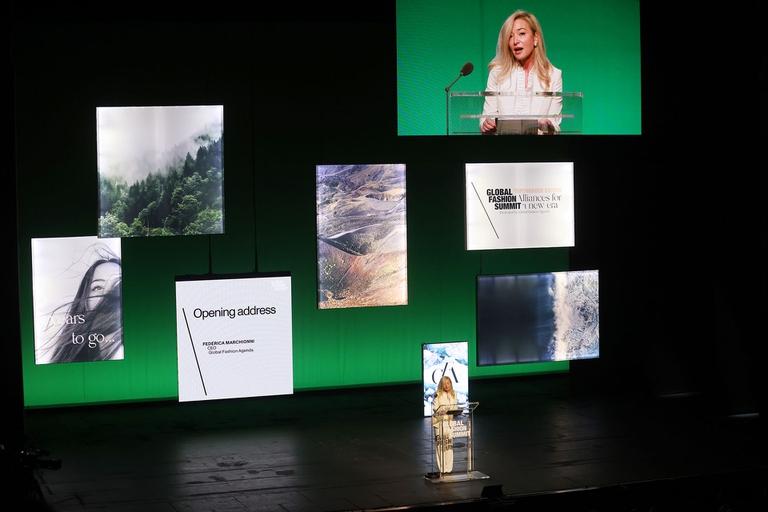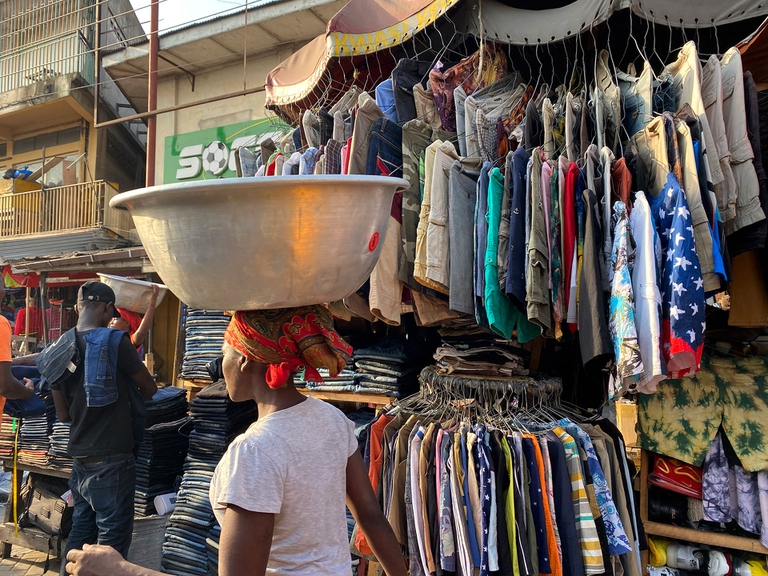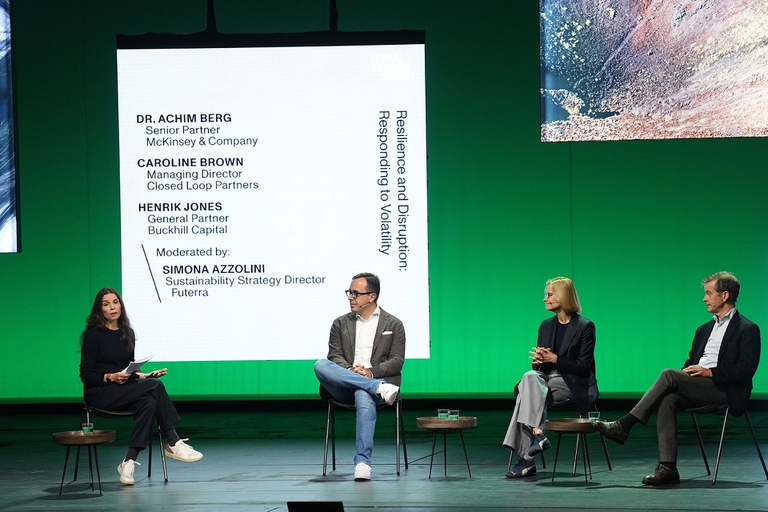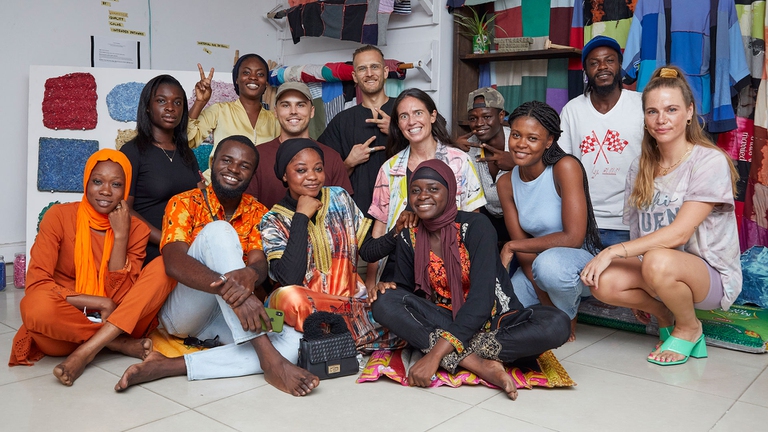https://www.lifegate.it/global-fashion-summit-2022
- |
- The Global fashion summit in Copenhagen brought together the major exponents of the fashion industry in June.
- The sector must quickly focus on decarbonisation, circularity and better working conditions for 70 million employees.
- Another need is to standardize and measure sustainability in a unique way for everyone.
You don't often see nine hundred members of thefashion industry gathered in the same place, the Royal opera house Of Copenhagen.From large giants such as Nike and Puma to NGOs, from journalists to representatives of the production chain, fast fashion and the world of luxury, such as the Kering group (which owns Gucci, Bottega Veneta, Saint Laurent).They all found themselves under the same stage at the beginning of June for the Global fashion summit, back for the first time in presence.Promoting these general states of fashion was the Global fashion agenda (Gfa), a non-profit organization that aims to guide the sector towards a positive impact for people and the Planet.

We need to accelerate the pace towards change
The Italian girl directed the dances Federica Marchionni, CEO of Global Fashion Agenda with a past as a high-level international manager (he tells his story in the book “A head full of dreams”, Roi Edizioni):“I took over the reins during the pandemic, a moment of great crisis for the world and certainly also for the fashion sector.Since the first summit, in 2009, Gfa has managed to bring in the sustainability on the agendas of big brands:there is no longer any discussion about why a new business model is needed, it is now established.Today, however, we need to accelerate the pace that leads to action and change."
Marchionni is a character who is a little out of the ordinary in an environment, that of sustainable fashion, populated by many activists and technical materials experts:“I don't deny that when I arrived at the Global fashion agenda it took me a while to implement changes and make myself appreciated by part of this world, to make them understand that sustainability has always been at the center of my path as a manager, even when it wasn't called that yet.I believe I speak the language of companies, that I know how to deal with CEOs and that I know their problems because I have done the same job.This is why I think it is the brands that have to give the opportunity definitive turning point to your business model.And I believe I can give my contribution."

Three issues to address, but how?
The objectives were already clear to all participants well before landing in Copenhagen.The fashion industry must quickly focus on decarbonisation, circularity And better working conditions for the 70 million people employed in the sector.On the path to reaching these targets, however, there is still a lot of slowness and confusion.“70 percent of emissions from the fashion sector arrive upstream of the supply chain.From the production and processing of textiles and the first semi-finished products.That's where we need to act," he explains Marchionni.
As we know, however, the fashion supply chain develops mostly in China and in the countries of South-East Asia, including Bangladesh, Pakistan, Vietnam, Cambodia, and is sometimes opaque for the companies themselves, lost in a tangle of subcontracted contracts in which it is difficult to give a face to all those involved.This is why the Global fashion agenda works directly with these countries through some initiatives such as Global circular fashion forum, to stimulate the textile recycling;furthermore, the next summit will be held precisely in this geographical area.

In parallel, traceability and transparency are two other crucial factors for brands, increasingly faced with the ambiguous provenance of their clothing items.Furthermore, in the last two years, many companies have been attacked by protests which invited them to pay their workers and suppliers even in the case of orders canceled at the last minute due to the pandemic, so much so that the #PayUp campaign by various NGOs has spread on social media.“We have produced a very useful and practical document, it is called Gfa monitor and it is available to everyone,” comments Marchionni.“We have identified five key areas in which to act and for each we have listed solutions, programs, case studies and available technologies.These are: safe and respectful working environments, decent wages, choice of materials, circular system and protection of natural resources”.
The question of measurements
Another important call that came from the Copenhagen stage was the need to standardize and measure sustainability in a unique way for everyone, both to make it easier for companies to set measurable objectives and monitor progress, and for the end consumer.In recent years, the measurement of sustainability proposed by the so-called has gained particular authority Higg index, launched ten years ago by the non-profit Sustainable apparel coalition, with which Global fashion agenda collaborated to develop the Gfa monitor.Recently, however, some have begun to challenge the Higg, pointing out that it uses partial or approximate measurements and that many key factors are not taken into account, such as how a material is produced or how workers are treated.
In a recent article by New York Times it is underlined how this system, which is in fact an accepted and widespread standard, seems to evaluate i petroleum-derived fabrics compared to natural fibres, because the latter would use more water and pesticides.The American journalist concludes by specifying that at the basis there is a general problem of scarcity of reliable data in fashion and that this is a major obstacle:How can you understand if you are improving your impact if you don't measure it unambiguously?“That's exactly what I was talking about.Measure and standardize.Can the Higg index be improved?Of course, everything is and they are working on it.I am in favor of a plurality of references, so that there is less risk of error, but it is necessary to agree on the principles", concludes Marchionni.
For her part, also the CEO of Sustainable apparel coalition, Amina Razvi, he released a note declaring some statements in the Times article incorrect, such as the alleged favoring of the index for synthetic fibres, but confirmed the need to work on the data.Following a notification from the Norwegian consumer authority they also announced that they will conduct an investigation by a third party on Higg index data and methodology.

Time is running out:a collective effort is needed
Finally, a certain slowness and lack of self-regulation in the fashion industry cannot be denied.There are various sustainability initiatives that brands participate in voluntarily, but we still seem to be very far from the goal, just eight years from 2030, the theoretical deadline for achieving the goals. Sustainable development goals and first mark for reducing emissions.
“I believe that it is the legislator's task to give the definitive turning point to this transition – explains Marchionni –, setting obligations for companies and precise timing is fundamental at this point.I appreciate the new European strategy for sustainable textile.Principles such as extended producer responsibility at the end of life of products or facilitating recycling and repair must become a norm."The Global fashion agenda itself, in the field of decarbonisation, has chosen to collaborate with Unfccc (the United Nations Framework Convention on Climate Change) to accelerate the pace towards zero emissions from the fashion industry and guide companies along this path.
The watchword of this edition of the Global fashion summit was Alliances for a new era, a title strongly desired by Marchionni.The most talked about agreement, announced right on the summit stage, was that between the Chinese ultra fast fashion giant Shein and the non-profit organization The Or foundation, which operates in Ghana.Founded by American Liz Ricketts, the focus of their commitment is on the circularity of clothing in the Kantamanto market, in Accra, literally invaded by textile waste from Western countries, also due to overproduction and the consumption model promoted by fast fashion.Shein's commitment is to donate 15 million dollars to help manage this emergency.

Marchionni does not join the chatter of criticism rained down on this announcement and continues along the line of collaboration:“These are problems that are too complex to be solved alone.We need to abandon traditional competition to achieve the same goals, share good practices.This is what we also tried to do at the summit, encouraging networking and the presentation of concrete successful cases."In his speech at the summit Marchionni wanted to point out that the verb "compete" comes from Latin and means "to go together".Coming together to have greater investments and understand how to make technologies and technologies available on a large scale more effective solutions:this is the only way to make these eight years ahead of us fruitful, not only as regards the fashion sector.
